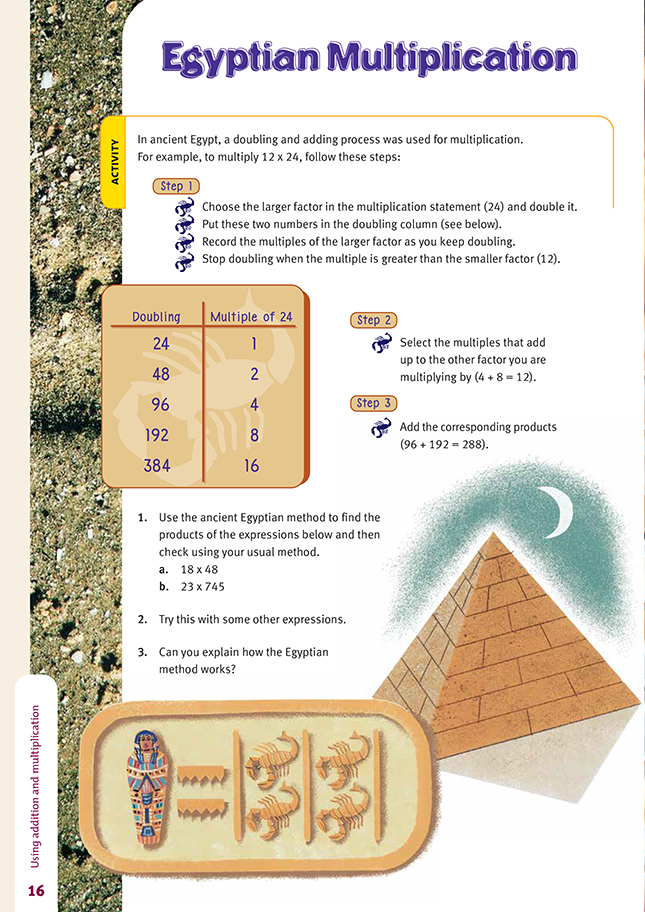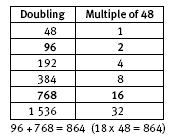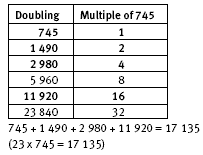This is a level 4 number link activity from the Figure It Out series. It relates to Stage 7 of the Number Framework.
A PDF of the student activity is included.
Click on the image to enlarge it. Click again to close. Download PDF (255 KB)
explore a multiplication strategy
FIO, Link, Number, Book Three, Egyptian Multiplication, page 16
In this activity, students learn another way of multiplying. They must follow the directions first and then consider the challenge “How does it work?”
To understand the Egyptian method, the students need to understand and be able to use the distributive law and part-whole thinking. The distributive law acknowledges that numbers that are multiplied together can be broken into parts and the parts multiplied and then added together to give the same answer.
For example, 7 x 14 = 98 gives the same answer as
7 x (10 + 4) = (7 x 10) + (7 x 4)
= 70 + 28
= 98
This thinking or law is the basis of the way many students are taught to multiply. The standard algorithm works because of this thinking, for example:
In this type of algorithm, the whole is broken into parts such as ones, tens, hundreds, and thousands or tenths and hundredths, but in the Egyptian method, the whole is broken into multiples of the larger number in the multiplication statement. These multiples are worked out by doubling.
This would be a good activity for introducing or practising the use of the constant function on a calculator. Once the students are familiar with working out the doubles, using the constant function would speed up the work. The constant function on a calculator allows you to instruct the calculator to keep repeating the function you set each time you push the equals button. The function required for the Egyptian method is doubling, which is multiplying by 2.
On most basic calculators, to multiply 24 by 2 and keep doubling the answer, push 24 x 2 = = … (On some calculators, you need to push 2 x x 24 = = …) The small k on the screen is instructing the calculator to multiply by 2 each time the equals button is pushed (48, 96, 192, 384, 768, 1 536, 3 072, 6 144, 12 288, and so on).
Answers to Activity
1.
b.
2. Answers will vary.
3. The Egyptian method works by spreading out (distributing) the multiplication and then adding the products. For example, to work out 24 x 12, they would spread out the 12 into 4 + 8:
12 x 24 = 24 x 12
= 24 x (4 + 8)
= (24 x 4) + (24 x 8)
= 96 + 192
= 288
To work out 23 x 745, they would spread out the
23 into 1 + 2 + 4 + 16:
23 x 745 = 745 x 23
= 745 x (1 + 2 + 4 + 16)
= 745 x 1 + 745 x 2 + 745 x 4 + 745 x 16
= 745 + 1 490 + 2 980 + 11 920
= 17 135



